Use this easy bread recipe for everything – sandwich bread, rolls, pizza, cinnamon rolls, braids – you name it! I’ve been making this one for almost 20 years, and it’s our favorite when we need an unfussy loaf.
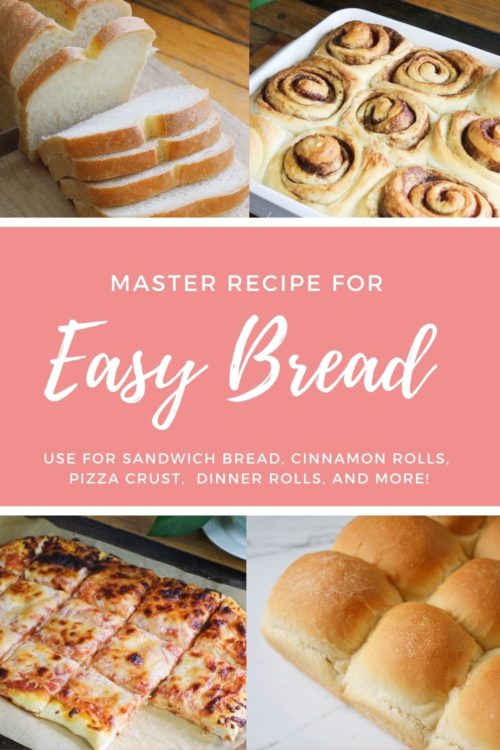
This post may contain affiliate links. Read my disclosure policy here.
Does baking bread scare you?
That’s okay.
Many of us did not grow up with our parents teaching us how to bake bread. Many of us feel barely adequate in the kitchen.
But we all know that homemade bread is like, the best.
If I could only smell 3 things for the rest of my life, it would be a campfire, homemade bread, and Chris’ cologne – in that order.
That’s one reason I bake homemade bread.
Skip to What You Need:
Is it Cheaper to Make Your Own Bread?
What Ingredients Do You Need to Make Bread from Scratch?
What is the Difference Between Active Dry Yeast and Instant Yeast?
How Do You Keep Homemade Bread from Falling Apart?
What Makes Bread Soft and Fluffy?
Do I Have to Use a Mixer to Knead Bread?
Can I Make Whole Wheat Homemade Bread?
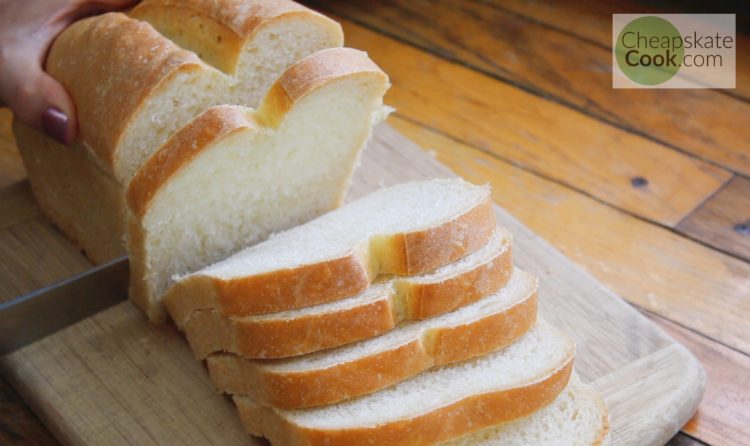
Is it Cheaper to Make Your Own Bread?
Depending on what ingredients you use and what bread you buy, homemade bread is really budget-friendly. My easy bread recipe is absolutely budget-friendly and made with clean ingredients.
If I use plain unbleached white flour, a loaf of bread costs just pennies per loaf. Whole wheat bread made from freshly ground wheat berries in my flour grinder is a little more expensive – but not as expensive as buying the little fancy bags of sprouted wheat at the healthy food store.
A plain loaf of sandwich bread from the grocery store costs us about $1-2 per loaf. The healthier bread costs more like $5 for a much smaller loaf.
If you consider that, simply based on ingredients, a loaf of homemade bread is a huge savings – especially considering how much bread my family can eat.
However, I think it’s also important to calculate the cost of our time.
Your time is important too.
The time you spend baking a loaf of bread could be spent doing something else more profitable, productive, or just more soul-filling – working, exercising, hanging with your people – I don’t know what you do, but there are some things that only you can do.
So while I think baking bread is a great skill, and it has saved us a lot of money over the years, it’s not something I force myself to do every week.
Sometimes it’s worth the cost in time and energy, and sometimes it’s not.
For me, I bake our bread in certain seasons. Sometimes baking bread is loving self-care (for me, because I enjoy baking, and for my family who eats it). I use this easy bread recipe and method that I can make without even thinking about it – last week I made it without even measuring all the ingredients.
But I don’t bake bread all the time.
It’s not always a good investment of my limited time and energy.
Is baking homemade bread cheaper?
Absolutely.
Sometimes.
You decide.
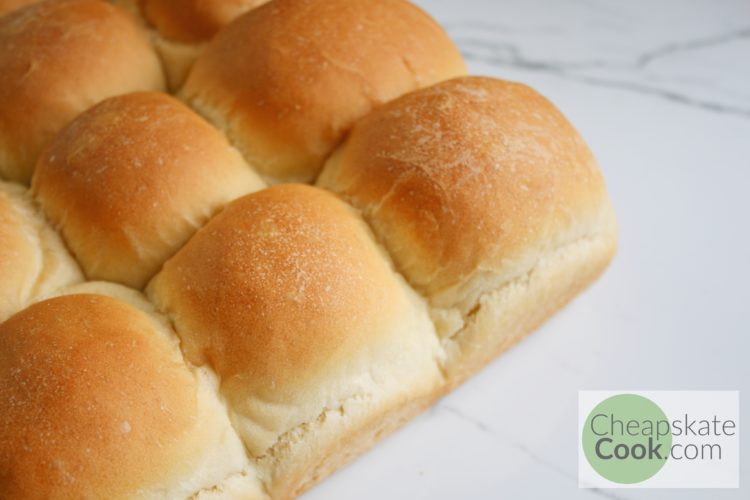
What Ingredients Do You Need to Make Easy Bread from Scratch?
My recipe uses:
- Unbleached white flour (you can use bleached white flour)
- Water
- Olive oil
- Molasses or honey
- Active dry yeast (I’ve used instant)
- Salt
This Easy Bread Recipe Is:
- Simple
- Quick (2 hrs and 10 minutes for yeast bread is pretty great!)
- Dairy-free
- Vegan
- Delicious
- Fluffy
- Not too sweet
- Versatile!
This is my Master Bread recipe, so I use it for anything I need bread dough for – sandwiches, dinner rolls, pizza crust, cinnamon rolls, calzones, monkey bread, you name it!
It also makes a great, budget-friendly gift for neighbors.
What is the Difference Between Active Dry Yeast and Instant Yeast?
Both active dry yeast and instant yeast do the same thing in a loaf of bread – they both act as a leaven, which reacts with the ingredients in the bread and gives it a light, airy texture as it rises and bakes.
However, there is one big difference between active dry yeast and instant yeast that you need to know:
Active dry yeast should be dissolved in water before adding it to the flour. Instant yeast can be stirred right into the flour.
To save money, I usually buy yeast in a big cake from Costco. I store a few cups of it in a jar in the fridge, and the rest of it I store in the freezer. It lasts for years this way. In fact, I can’t even remember the last time I bought yeast.
I’ll share the active dry yeast instructions in the recipe, but I’ll also add instant yeast instructions in the notes.
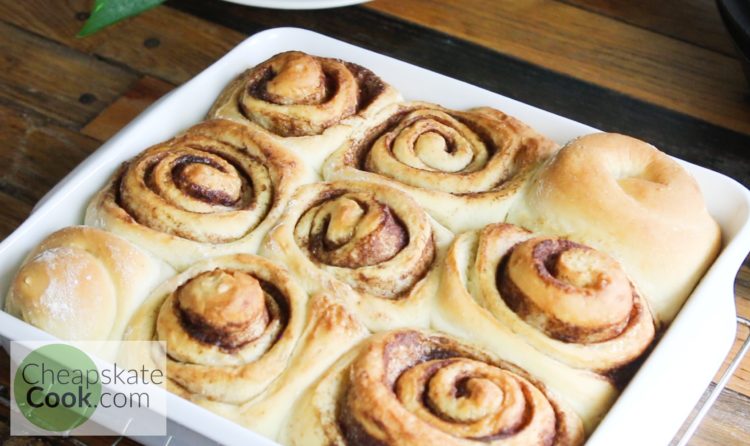
How Do You Keep Homemade Bread from Falling Apart?
As much as we love slicing into bread fresh from the oven, if you want bread that’s not crumbly, you have to let it cool. If you’re slicing bread to eat with dinner, I think it’s fine to just cut into it while it’s hot and watch the butter melt as you spread it. However, if you’re planning to use this bread for sandwiches, wait 2-3 hours before slicing into it.
In order to prevent your bread from falling apart, let it cool completely before slicing it. This is especially important if you’re going to use it for sandwiches.
What Makes Bread Soft and Fluffy?
If you read the ingredients label on a loaf of store-bought bread – even the loaves from the bakery section – you’ll see a long a list of ingredients. They all play a part in making the bread soft, fluffy, and longer-lasting than a normal loaf of homemade bread.
So homemade bread is not as soft and fluffy as the grocery store has trained us to expect. However, in my opinion, it’s still more delicious.
Plus, the short, clean ingredients list makes it even better.
Homemade bread will never be as light and fluffy as storebought bread – the ingredients list is too short (yay!). However, as long as you knead it really well and use a good, unbleached all-purpose flour, your homemade bread will be amazing.
Do I Have to Use a Mixer to Knead Bread?
While using a Kitchen Aid or a Bosch Mixer to knead your bread dough is extremely helpful (I’ve had my giant-size Kitchen Aid for nearly 10 years, but I’m planning to get a Bosch if it ever dies), you can absolutely knead this bread by hand.
Kneading is something that is easier to understand when you see it, rather than read it, so I recommend hopping over to this video and seeing how to knead bread dough correctly!
I grew up baking all of our own bread, and we always kneaded it by hand. My arms were so toned and kneading bread is extremely soothing and therapeutic.
It’s therapy and carbs at the same time.
Don’t fear the hand-kneading.
That being said, I love having the option to NOT knead my bread now (thank you, KitchenAid), and my arm muscles certainly show it.
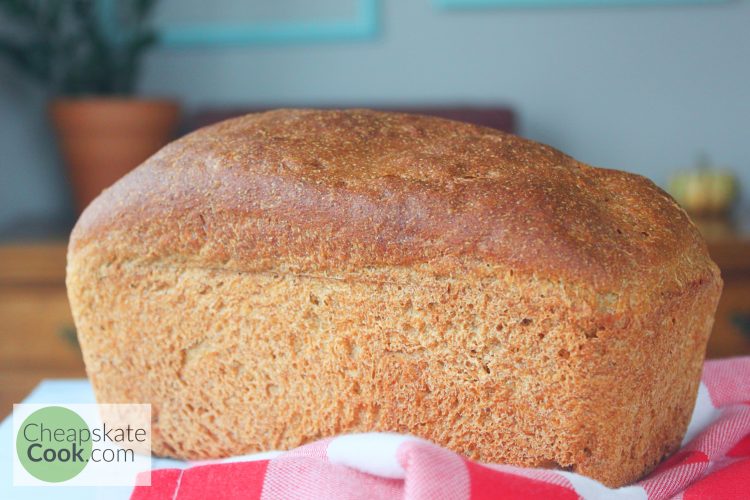
Can I Make Whole Wheat Homemade Bread?
I grew up on whole grains, and we eat a lot of them in our home. However, this master recipe is made with unbleached flour because it’s the easiest to work with, it’s absolutely delicious, and sometimes that’s all we have available.
I have a lot of whole grain recipes if you prefer working with whole grain!
The easy bread recipe I’m sharing today is ideal for people who want to learn how to bake bread, need a Master Bread recipe they can use for EVERYTHING, or who just need something easy and unfussy. So I’m using unbleached all-purpose flour.
However, if you want to make this recipe with all whole wheat, go for it! That what I grew up eating, and it was delicious – albeit extremely crumbly (go here for a non-crumbly recipe). Just be sure to knead your bread dough twice as long and let it rise twice as long for each rise.
Can I Add Whole Wheat Flour to my Bread Recipe?
We love whole grains, but there is an appreciable difference between homemade white bread and and whole wheat bread.
If you want 100% whole wheat bread that doesn’t crumble when you slice it for sandwiches, check out our non-crumbly whole wheat bread recipe here.
If you just want to add some whole wheat to your bread, go for it! You’ll have to knead the bread a little longer and let it rise a little longer because the gluten strands in wheat flour are a lot sleepier.
In my experience, anything more than half whole wheat flour and half white flour will be significantly more crumbly and thick than white flour bread.
Is Homemade Bread Healthier than Store Bought Bread?
With a short, clean ingredient list, I vote homemade bread over store-bought bread every time.
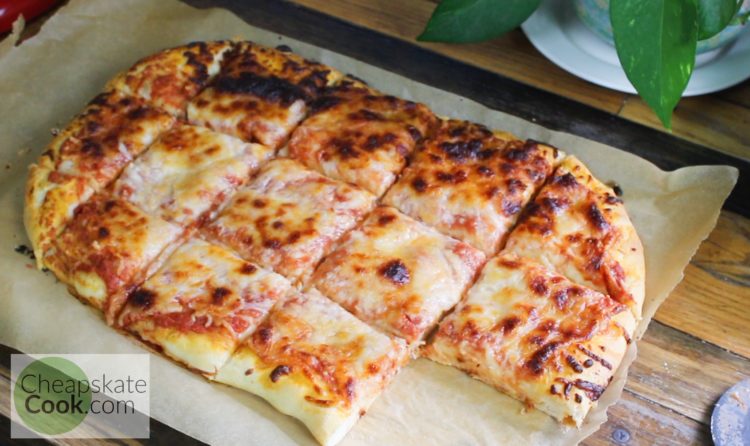
What is a Master Bread Recipe?
This is my go-to recipe for almost anything made with yeast and slathered with butter.
Make it just like the recipe says, and roll it into loaves for sandwiches.
Split it into smaller pieces and make dinner rolls.
Use warm milk instead of water (or just water is fine), roll it out flat, sprinkle it with butter and cinnamon sugar, and make it into cinnamon rolls.
Cut the sweetener in half, roll it out flat, and top it with sauce and mozzarella for homemade pizza dough.
Cut it into tablespoon-size pieces, dunk it in butter and cinnamon sugar, and toss it into the bundt pan for pull-apart monkey bread.
Want to make parmesan bread sticks? Use this recipe.
Want to make calzones? Use this recipe.
Want to make the best eggs and toast of your life? Use this recipe.
Need to make something nice but budget-friendly to give to the neighbors or the lady who fed your cat while you were on vacation? Use this recipe.
Everywhere you need a basic yeast bread dough, you can use this recipe.
You don’t need to learn a hundred different bread recipes. All of those fun, delicious baked goods – cinnamon rolls, calzones, pizza, monkey bread – are at your fingertips.
Baking bread is enough of a learning curve. Just learn this one recipe and get baking.
If you try this recipe, let us know! Leave a comment, rate it, and tag a photo #cheapskatecook and @cheapskatecook on Instagram.
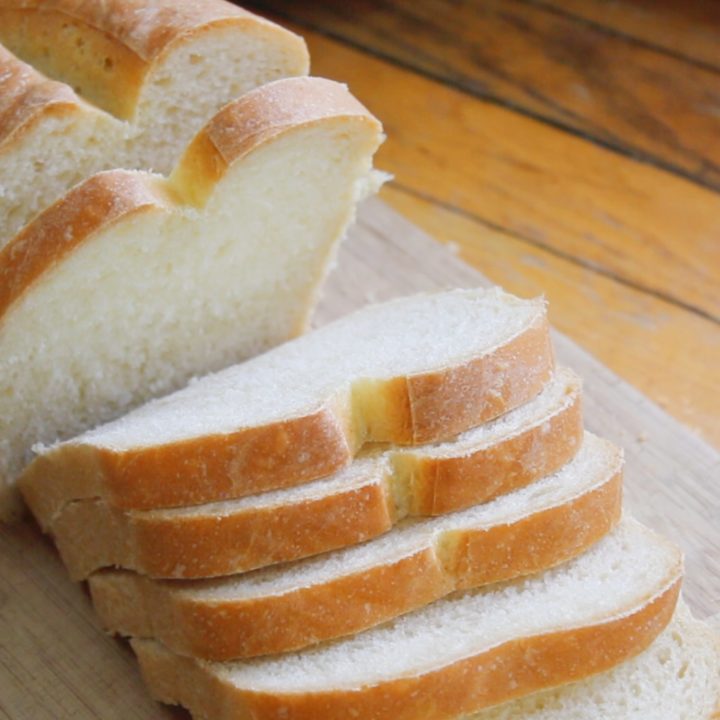
Easy Bread Recipe
Use this easy bread recipe for everything - sandwich bread, rolls, pizza, cinnamon rolls, braids - you name it! I’ve been making this one for almost 20 years, and it’s our favorite when we need an unfussy loaf.
Ingredients
- 2 1/2 cups warm water (should be no hotter or colder than your finger when you dip it in the water)
- 1/4 cup olive oil
- 2 tbsp sugar, molasses, honey, or maple syrup
- 1 tbsp dry active yeast
- 6 cups unbleached all-purpose flour
- 2 tsp salt
Instructions
- In a large measuring cup or medium-size bowl - or, hey, even a plastic leftover container because you forgot to do the dishes and would rather make bread than clean the kitchen (this is a true story at my house) - stir together the water, oil, sugar, and yeast. Set it aside for 5-10 minutes, so the yeast can activate.
- Meanwhile, in a large mixing bowl, stir together the flour and salt. Nothing exciting happening here.
- However, there should be something very exciting happening in the yeast and water mixture. After 5-10 minute, the surface of the water should look like a boggy, swamp that is definitely possessed by a swamp demon. It'll be bubbly, frothy, and might have even started to rise a little. Fear not. You have the silver cross for this swamp demon.
- It's called pouring the water mixture into the flour mixture and stir until a raggy, messy dough kind of comes together. It won't be pretty, but it should smell like bread.
- If you have a mixer with a kneading attachment (Kitchen Aid or Bosch are nice), use that to knead the dough for 5-10 minutes. During the kneading process, you might need to add a few tablespoons of water or flour if the dough is overly dry or wet. Only add a tablespoon of either ingredient at a time in order to avoid a cereal and milk, then more cereal to use up the milk, then more milk because the cereal is too dry, situation.
- If you're like my family when I was growing up and you like massive forearms, knead the dough by hand. This is easier seen than explained, so do a quick internet search and start making everyone jealous of your toned arms.
- I demonstrated in the video what the dough should look like when you're done kneading. Basically, if you gently press your finger against it, the dough should spring back until your fingerprint is mostly gone.
- Smooth the surface of the bread by tucking the edges underneath it until the surface is smooth and dough forms a nice ball. Place it back in the bowl (you can grease the bowl with a little olive oil if you like), cover it with a towel, and let it rise for 30-40 minutes.
- It won't rise very high the first time. Punch it down, cover the bowl, and let it rise another 30-40 minutes.
- For the final rise, divide the dough in half and shape each half into whatever you like - loaves (fold it into an oblong loaf shape and pop it into a greased loaf pan), rolls (cut it into 12 pieces), cinnamon rolls, pizza, etc. I'll share those instructions soon, but you'll get a solid overview in the video.
- Cover and rise for 15 minutes. Preheat the oven to 350 F and let it rise for another 15-20 minutes.
- Bake for 30 minutes, until the top of the loaf is golden brown.
- Cool for 10 minutes before removing it from the pan.
- If you eating this bread fresh with a meal, dig in immediately and serve with lots of butter.
- If you're saving the bread for sandwiches (saving homemade bread? What is that.), let it cool completely before slicing.
Notes
Whole Wheat
If you want 100% whole wheat bread that doesn't crumble when you slice it for sandwiches, check out our non-crumbly whole wheat bread recipe here.
If you just want to add some whole wheat to your bread, go for it! You'll have to knead the bread a little longer and let it rise a little longer because the gluten strands in wheat flour are a lot sleepier.
In my experience, anything more than half whole wheat flour and half white flour will be significantly more crumbly and thick than white flour bread.
Instant Yeast
If you're using instant yeast, simply stir the yeast in with the flour and salt, then pour the liquids into the flour mixture.
No-Knead Version
If Your Dough Does Not Rise
Possible culprits:
1. Old yeast - especially if it's been stored in the cupboard for a long time. Store yeast in the fridge or freezer for longer life.
2. Too cold - Here's a bread rise hack. Turn your oven light ON but keep your oven OFF. This creates a warm, but not hot place for the bread to rise. Stick a piece of tape over the oven controls so you don't accidentally melt your bowl into your oven rack (ask me how I know).
Recommended Products
As an Amazon Associate and member of other affiliate programs, I earn from qualifying purchases.
Nutrition Information
Yield 30 Serving Size 2 slicesAmount Per Serving Calories 148Total Fat 2gSaturated Fat 0gTrans Fat 0gUnsaturated Fat 2gCholesterol 0mgSodium 161mgCarbohydrates 30gFiber 1gSugar 10gProtein 3g
Please note: The actual calories and nutrition of this dish will change depending on what ingredients you use. Nutrition information is not always accurate.
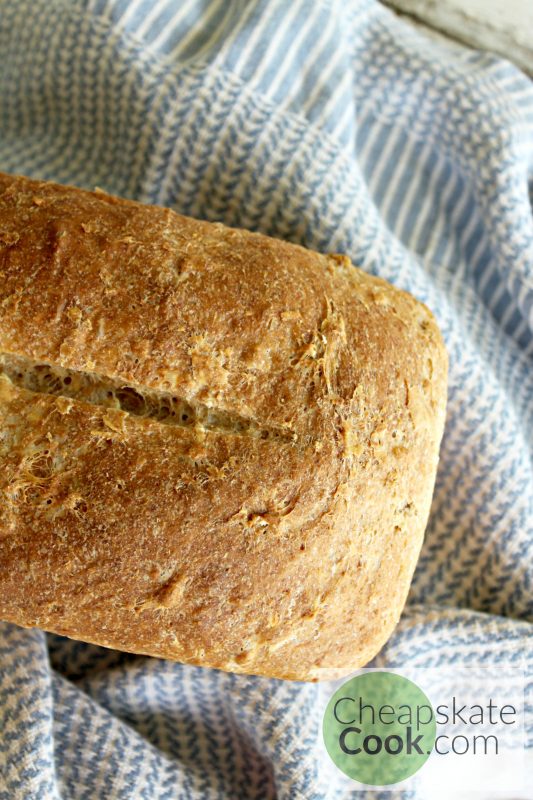
What You Need to Do Now:
Make some bread! Set aside two hours one weekend and try this easy bread recipe! If it fails (old yeast, cold weather, newbie mistake – we all have failed loaves sometimes), make some cinnamon rolls or pizza! You can’t lose with this recipe.
If you found this recipe helpful, let us know! Leave a comment, share it on Facebook or Pinterest, and follow us on Instagram or YouTube for more!
Slash your grocery budget and feed your family real food! Get simple, frugal, real food menu plans every month for FREE in the Cheapskate Cooks’ 1-Min Email. Get the next one here.

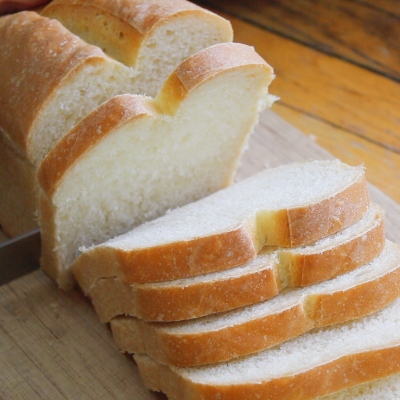
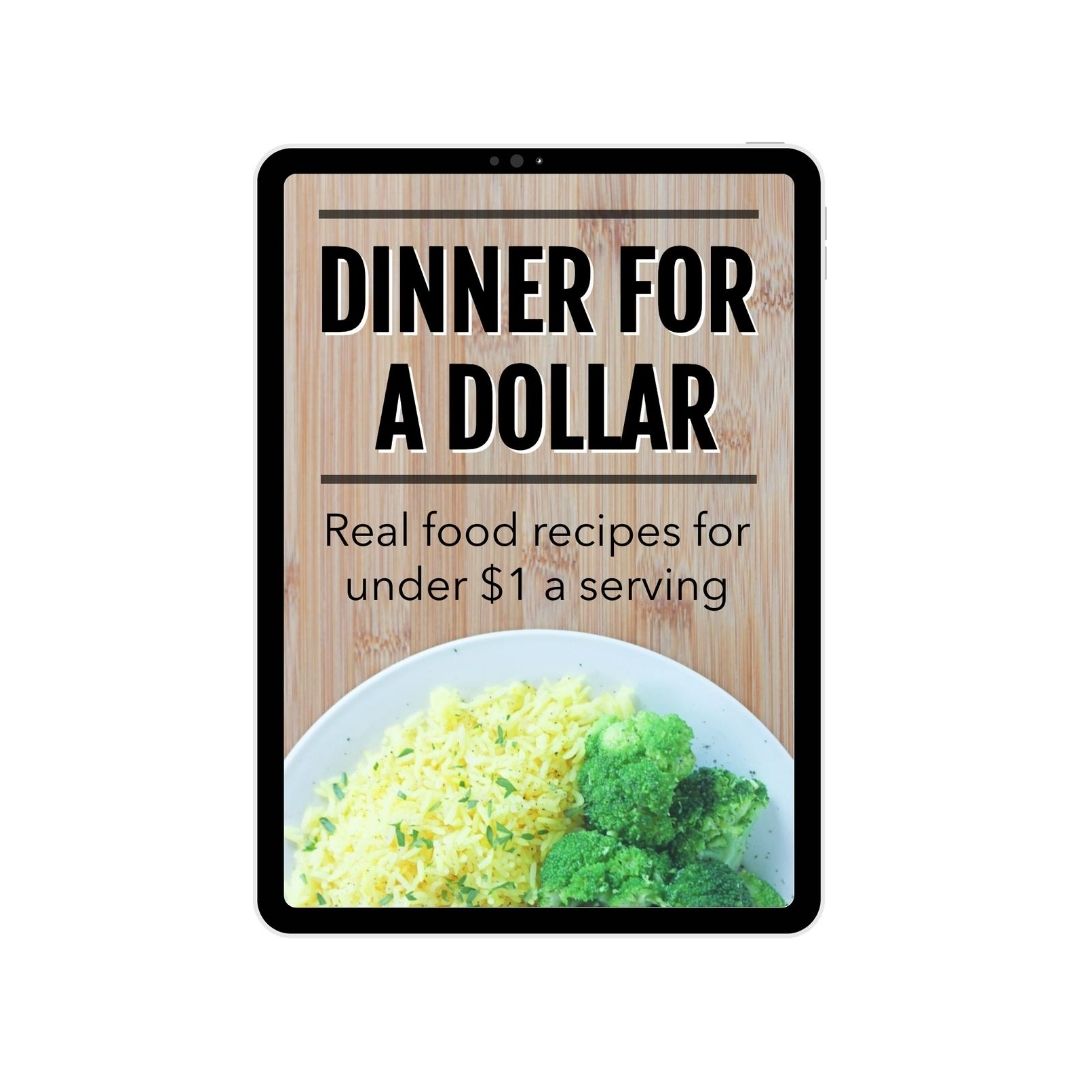
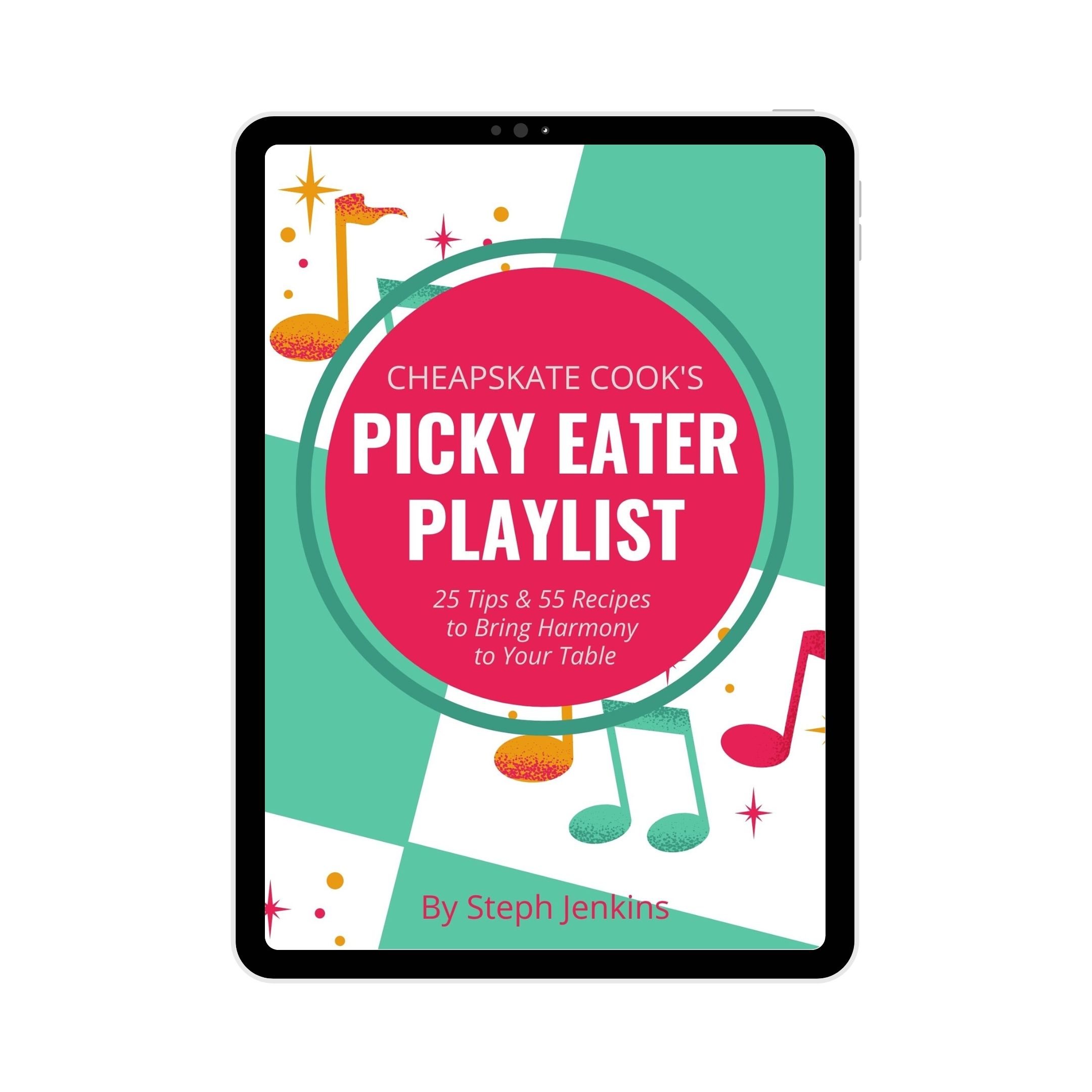
My family and I LOVE this recipe! It’s easy and delicious! I’ve made the dinner rolls and cinnamon rolls, amazing!